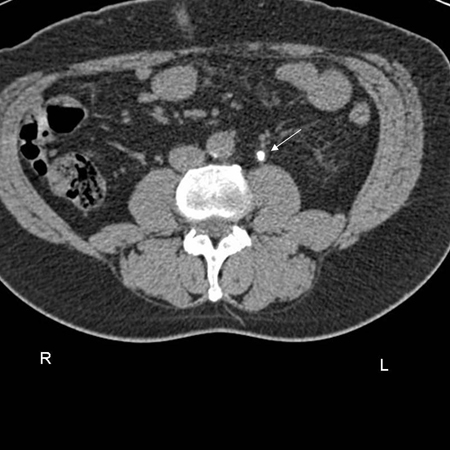Summary
Differentials
Common
- Cystitis
- Urethritis
- Pyelonephritis
- Vulvovaginitis (including bacterial vaginosis)
- Balanitis/balanoposthitis
- Acute prostatitis
- Benign prostatic hyperplasia
- Urolithiasis
- Local irritants
Uncommon
- Genital herpes simplex virus (HSV)
- Epididymo-orchitis
- Cervicitis
- Schistosomiasis
- Tuberculosis (TB)
- Urethral stricture/stenosis
- Instrumentation or catheterization
- Sexual abuse
- Athletics
- Interstitial cystitis
- Atrophic vaginitis
- Spondyloarthropathies
- Noninfectious prostatitis
- Primary prostate pain syndrome
- Ketamine bladder
- Urinary fistula
- Prostate cancer
- Bladder cancer
- Renal cancer
- Cervical cancer
- Urethral cancer
- Penile cancer
- Drugs or herbs
Contributors
Authors
Kasra Saeb-Parsy, BSc, MBBS, AFHEA, FRCSEd (Urol)

Consultant Urologist
Cambridge University Hospitals NHS Foundation Trust
Cambridge
UK
Honorary Lecturer
Anglia Ruskin University
Cambridge
UK
Disclosures
KS-P declares that he has no competing interests.
Sarah R. Saifuddin, BSc (Hons), MBBS, MRCS
Urology Specialty Registrar
Cambridge University Hospitals NHS Foundation Trust
Cambridge
UK
Disclosures
SRS declares that she has no competing interests.
Acknowledgements
Kasra Saeb-Parsy and Sarah R. Saifuddin would like to acknowledge Dr Elaine Lee and Dr Vincent J. Gnanapragasam, the previous contributors to this topic.
Disclosures
EL and VJG declare that they have no competing interests.
Peer reviewers
Robert Pickard, MD, FRCS (Urol)
Professor of Urology
Institute of Cellular Medicine
Newcastle University
Newcastle upon Tyne
UK
Disclosures
RP has received funding from the UK NHS (NIHR) to undertake commissioned reviews of treatment for benign prostatic enlargement.
George Martin, MD
Instructor
Department of Urology
Mayo Clinic
Scottsdale
AZ
Disclosures
GM declares that he has no competing interests.
Peer reviewer acknowledgements
BMJ Best Practice topics are updated on a rolling basis in line with developments in evidence and guidance. The peer reviewers listed here have reviewed the content at least once during the history of the topic.
Disclosures
Peer reviewer affiliations and disclosures pertain to the time of the review.
References
Key articles
European Association of Urology. Guidelines on urological infections. Apr 2024 [internet publication].Full text
American College of Radiology. ACR appropriateness criteria: acute pyelonephritis. 2022 [internet publication].Full text
American College of Radiology. ACR appropriateness criteria: recurrent lower urinary tract infections in females. 2020 [internet publication].Full text
American College of Radiology. ACR appropriateness criteria: lower urinary tract symptoms-suspicion of benign prostatic hyperplasia. 2019 [internet publication].Full text
Reference articles
A full list of sources referenced in this topic is available to users with access to all of BMJ Best Practice.

Patient information
Bacterial vaginosis
Chlamydia
More Patient informationLog in or subscribe to access all of BMJ Best Practice
Use of this content is subject to our disclaimer